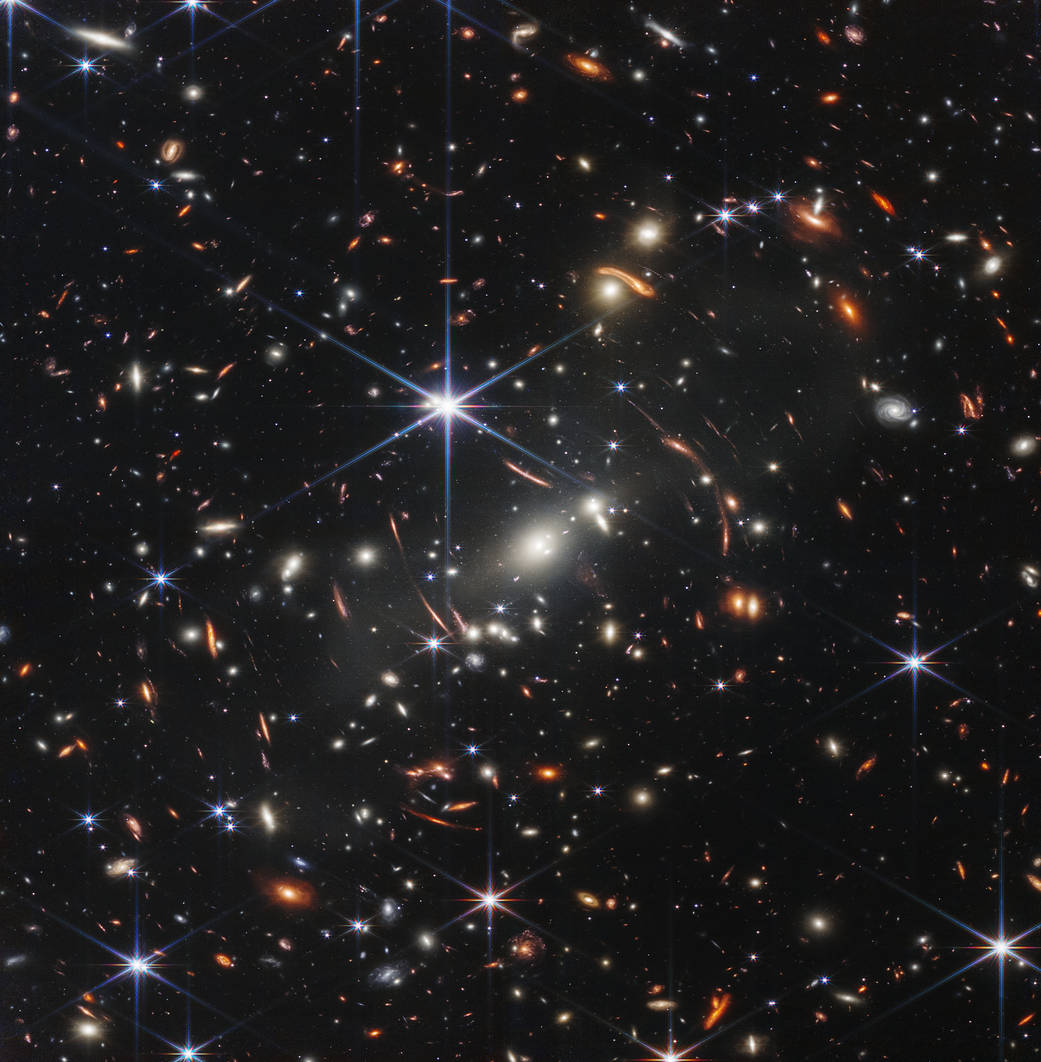
James Webb Telescope’s first images released
By Ramiro Bustamanate Torres, August 10 2022—
Announced on July 12, the first images of NASA’s James Webb Space Telescope (JWST) were released to the public showing the power of the new telescope and higher definition images than the Hubble Space Telescope and the Spitzer Space Telescope. The JWST project was achieved in partnership with the European Space Agency (ESA) and the Canadian Space Agency (CSA). The JWST was named in honour of NASA’s second administrator, James E. Webb, who led the space agency from 1961 to 1968.
The JWST is a tennis court sized wonder of the largest mirror launched in space with a cost of around $10 billion and two decades of international collaboration. The creation of the JWST allows scientists to view the early universe, study galaxy formation rates, life cycles of stars and search for other planets. The telescope is about 1.5 million kilometres from the Earth, past the Moon’s orbit and away from the Sun which allows a view of half the sky year round and avoids interference from the Sun. Given the size of the primary mirror used on the telescope — the 18 hexagonal segments put together makeup around 6.6 metres in diameter — it had to be folded into the ship it was launched from and then unfolded in space since no current ship could house it once fully open.
One of the first images released was a deep field image of the galaxy cluster SMACS 0723, an area commonly photographed to research the early universe by focusing on deep space. The Hubble telescope had previously photographed this area in 2017 and both the JWST and Hubble have been compared to showcase the difference in power of each telescope. While the JWST has produced the highest definition image of one of the farthest areas in space, it is not here to replace the Hubble but to complement and expand many projects undertaken by the Hubble and many other telescopes.
The JWST is an important addition to existing and decommissioned telescopes. This can be seen by comparing the different capabilities of the telescopes. The Hubble covers wavelengths that include the visible-light spectrum, ultraviolet light and near-infrared light — it can see just as much as a human and then some. The Spritzer was another infrared telescope, decommissioned in 2020, that covered light wavelengths of the mid- to far-infrared, this is beyond visible colours and closer to microwaves, instead perceived as heat. The JWST captures near- to mid-infrared light, covering the unviewable spectrum of the Hubble and Spitzer with some overlap. Apart from covering a different area of the spectrum, the JWST has a much larger mirror which allows for more light to be captured for sharper images and its position is away from the Sun to avoid interference due to its high sensitivity. Therefore the feat of launching one of the strongest telescopes made yet that can help us understand space better is something worth celebrating.
The CSA’s contribution to the project was the Fine Guidance Sensor (FGS) and the Near-Infrared Imager and Slitless Spectrograph (NIRISS) instrument. The NIRISS can take near-infrared images of the brightest objects in space with high definition while the FGS is used to ensure the JWST is oriented towards the target area accurately. Canadian scientists have been guaranteed 450 hours of observation time with the JWST as well as five per cent of the General Observations program reserved for Canada. Dr. Matt Taylor from the Department of Physics and Astronomy at the University of Calgary will be one of the Canadian scientists to use the JWST to study black holes. Taylor and other faculty members of the U of C had commented on the JWST in December 2021 when the telescope was launched.
There are a few other images released from the JWST that showcase how powerful the telescope is and projects have already been announced. To see the data gathered by the Space Telescope Science Institute, visit the Mikulski Archive for Space Telescopes website and you might even find a new wallpaper background for one of your devices. For more information on the JWST, visit the NASA website.
